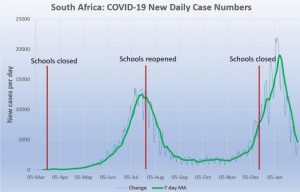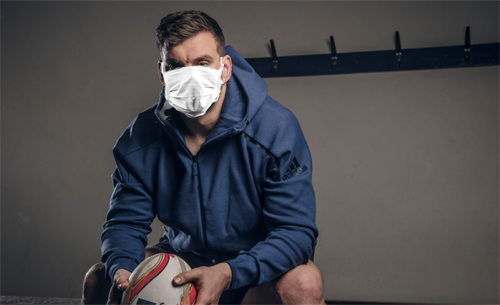PANDA (Pandemics Data & Analytics, a multidisciplinary group made up of leading scientists, actuaries, economist, data scientist, statisticians, medical professionals and lawyers recently looking into the effects of the COVID-19 pandemic on children who play school sports. What follows is their findings.
Whilst the effects of return to school sports on the spread of COVID-19 have not been studied, there is now plenty of evidence that the opening of schools does not affect the spread of the virus. Also, increasing evidence shows the harm done to children by keeping schools closed. If children are able to return to school without this affecting the spread of SARS-CoV-2, then they should safely be able to return to sport. The effect of opening schools on the spread of COVID-19 in South Africa: The NICD (National Institute for Communicable Diseases) released a report on 22nd January 2021, in which they state: “There were no consistent changes in incidence trends associated with the timing of opening or closing of schools.” (https://www.nicd.ac.za/wpcontent/uploads/2021/01/COVID-19-SPECIAL-PUBLIC-HEALTHSURVEILLANCE-BULLETIN-Volume-7.pdf)
This can be confirmed by the following graph which shows the change of COVID-19 case numbers in South Africa, along with the times of major school openings and closings.

The negative consequences of school closures
Multiple studies and data show the negative impact of school closures on children. These are best summarised by the statement made by the UNICEF Executive Director on 12th January 2021. (https://www.unicef.org/press-releases/children-cannot-afford-another-year-school-disruption)
Importantly, this statement includes the following remark: “Without daily interactions with their peers and a reduction in mobility, they are losing physical fitness and showing signs of mental distress.”
The negative consequences of no competitive sport:
The following article is written by a Canadian doctor who has witnessed first-hand the tragedy of the pandemic, yet also acknowledges the impact on children who are no longer able to play sport. “You don’t have to get the virus to suffer from it … For high-performance people, high-performance athletes, high-performance coaches, that’s enough to take away part of who you are. And that’s dangerous. And it’s just as dangerous as this virus.”
You take a (hockey player) that’s 11 years old. These are kids that play (hockey) five times a week. It’s who they are. It defines their personality. And you take that away from them, you’d better have something to fill that gap. Because you’ve just made a huge hole. And if we don’t acknowledge that hole, if we don’t look at it, it’ll fill. It’ll fill with depression. It’ll fill with anxiety. It’ll fill with childhood obesity. It’ll fill with all kinds of stuff that’s negative.” (https://www.thestar.com/sports/hockey/opinion/2021/01/30/theyre-lost-the-pandemic-is-taking-asilent-toll-on-athletes-young-and-old.html)
The case for return to all school sports:
- The opening of schools has not affected the spread of the SARS-CoV-2 virus, and teachers are not more at risk at school than they are elsewhere in the community.
- The SARS-CoV-2 virus is known to spread most easily indoors. Having children partake in sport of any form outdoors (including in swimming pools) will pose less risk to both children and their teachers than being indoors in a classroom.
- Sport and physical activity is vital to the physical and mental health of children, and can only contribute towards stronger immune systems.
- The alternative to no sport for many children is hours of unsupervised “screen time” indoors. The comparative advantages and disadvantages of being outdoors on a sports field or indoors on a couch, should be clear.
- Allowing children to partake in physical activity results in better behaviour in the classroom! • The same health advantages apply to coaches – being outdoors and physically active can only be seen as a benefit.
- Teachers who are at risk from serious COVID-19 outcomes are unlikely to be the ones coaching sport in the first place.
- Despite the perceived need to social distance, the reality is that this is not happening in schools. It is impossible to keep children distanced from each other and to stop them sharing objects and food!
- A return to sport should be a return to ALL school sports, including official inter-school competition. Children from different schools are seeing each other and interacting outside of school hours anyway. Doing this in a supervised environment is better than children spending hours together with nothing constructive to do.
- A return to all sport includes contact sport. Asymptomatic children are extremely unlikely to pass on the virus whilst passing a ball between themselves. They are also extremely unlikely to pass any virus on to coaches. As mentioned, children are passing objects (and food) to each other on many occasions during the day anyway.
- Whilst being a huge benefit to children, sport is vitally important to their parents. Having children at home affects the ability of parents to earn an income as children require supervision during the time that they would usually be at sport. Amongst other things, this can lead, both directly and indirectly, to heightened tension in the home. This point is highlighted in the WHO report on school closures (referenced above): “Keeping children home affects the ability of parents to work, introducing other risks.”





